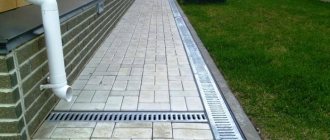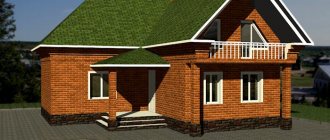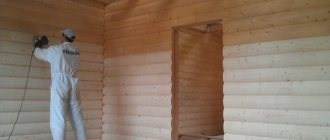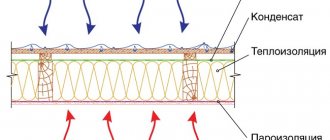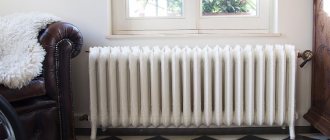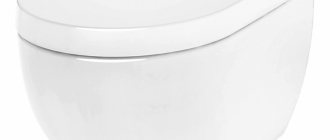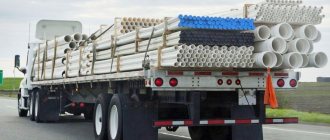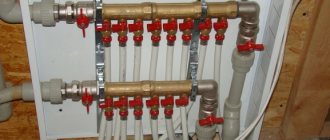When going to a dacha outside the city, few people are ready to completely give up the benefits of civilization, especially when it comes to running water. Agree, the importance of water supply to a summer cottage is difficult to overestimate.
Water is necessary for watering the garden and vegetable beds, as well as for solving everyday problems. What can we say about the use of household appliances that require connection to the water supply network. To arrange the water supply, you can hire specialists or do it yourself.
To make water supply at your dacha with your own hands, you must first decide on the source of water, select the necessary equipment and materials, and study the sequence of work. These are the questions we will help you solve.
For a better understanding of the water supply process, we illustrated the material with visual diagrams and photographs, and supplemented the information with video clips.
Water supply at the dacha
In the recent past, the main source of water at the dacha was a well or an artesian well, on which a rocking chair was placed. There was no talk of any water supply then; the supply of water for drinking and domestic needs was organized using buckets. This required some time and effort. That is, there was no talk of any comfort.
Buckets and watering cans were even used to water the vegetable garden and replenish water supplies in the summer shower. As an option, they used metal barrels and other containers that were filled with rainwater.
A rainwater barrel for watering green spaces Source journalexpress.ca
All this did not prevent people from living outside the city. But the quality of life was not at a high level. Everything changed when the first household pumps went on sale. These were submersible units operating from an alternating current network of 200 volts. Small in size, but with fairly good performance and pressure, the pumps immediately became popular. They were simply immersed, for example, in a well or pond, from where they used to carry water in buckets, plugged into an outlet, and received a powerful pressure of water pouring out of a hose.
Craftsmen immediately realized that pumps are an opportunity to change living in a dacha and increase the comfort of living. Therefore, they immediately began to develop and implement simple, and in some cases even very simple, water supply networks.
Water supply from a European barrel with rainwater Source kohlmaier.info
Simple plumbing
The simplest water supply network, also called summer water supply, is a pump connected to an extensive system of scattered hoses. The latter are scattered throughout the area so that with their help they reach water consumers. Usually this is the construction of the dacha itself, where a sink is connected in the kitchen; on the street there is a summer shower and a tap for watering green spaces. Three points for a summer residence are the optimal condition. In addition, submersible pumps were specially designed for this purpose. That is, they do not have such a large power to supply water to a large number of consumers.
This type of water supply network received the name “summer” only because it could only be used in the summer in warm weather. In the fall, the hoses were dismantled, freed from water, twisted, the pump was pulled out from the water intake source, and all this was stored in the shed until spring.
But the most interesting thing is that such a plumbing system was inexpensive for the owners of the dacha. In addition, it was always possible to change the location of the water supply sections by moving the hose from one place in the country to another. The hose trains were connected by sections of steel pipes, usually with a diameter of 15-32 mm. Fittings in the form of tees or crosses were made from the same pipes using electric welding.
Connecting hoses for irrigation with plastic fittings Source bouw.ru
Today, metal pipes have been replaced by plastic fittings, which are sold in hardware stores. And although this type of plumbing is used less and less in suburban areas, fittings are still purchased, which means that someone else still uses it.
It should be noted that the water supply network of a pump and hoses is divided into two groups according to the methods of laying the latter: open and closed. The first is hoses simply laid on the ground. They are in plain sight, and if the owner of the dacha has no complaints about the appearance of the water supply, then this option is acceptable.
The second is hoses that are laid in prepared grooves (trenches). They are of small depth - 10-15 cm. The laid hose distribution is covered with soil, so there are no problems with the appearance of the summer cottage.
Open garden plumbing system Source gizbar.com
There is another simple option in which plastic pipes are used instead of hoses. This is usually a closed system that is buried in the ground. The pipes are distributed throughout the site to the required consumers. From them you can assemble a collapsible system or a non-dismountable one.
- The first is small sections connected to each other by ruckers , they are also a connecting element called “ American ”. That is, at any time the water supply network can be dismantled and stored in the same shed.
- The second is a non-separable system . Therefore, it is planned in advance, creating a distribution scheme for consumers. It is done once and for all . Of course, it is not a problem for the master to remake the network, for example, by cutting into the pipe distribution another section to an additionally installed consumer.
Country water supply from plastic pipes Source aqua-rmnt.com
Complex country water supply systems
In fact, water supply in a dacha can be organized, as they say, using the latest technology. There are a huge variety of water pumps and filtration systems on the market today. All this is freely available for little money. That is, today organizing an autonomous water supply system that would supply a country house with the cleanest water is not a problem. Therefore, let's look at what manufacturers offer today instead of the simplest garden water supply systems.
As is the case with simple water supply systems, water intake outside the city is organized from a well or open reservoirs. Today, another source is used - wells that are drilled to a sufficiently great depth, where the purest water lies in large quantities.
Each source uses its own pumps, because in each of them water intake is carried out differently. And since pumping equipment is energy-dependent, that is, it runs on electric current, manufacturers make sure that water and current do not meet somewhere inside the pumping unit.
Diagram of a complex country water supply Source kapustik.ru
See also: Catalog of companies that specialize in the installation of water supply and sewerage.
Types of pumps used
In dachas, three types of pumping devices are used to organize an autonomous water supply:
- Superficial . They are installed next to the source of water intake, without lowering them into the water itself. Hence, in principle, the name. A hose or plastic flexible pipe is lowered into the water, at the end of which a mesh filter is installed. The second end is connected to the pump to the suction pipe. A water supply network is laid from the device itself, or rather from the supply pipe.
Surface pump for a summer residence Source tr.decorexpro.com
- Submersible . They have already been mentioned, we’ll just add that such pumps are used only if the water intake level is not lower than 8-10 m. They are partially or completely immersed in water, hence the name of the units.
- Boreholes , they are also deep . They were specially invented for pumping water from wells, that is, from great depths. At dachas, they use devices that can be used to lift water from a depth of 50 m. Although manufacturers also offer other models that submerge to depths of over 200 m.
Borehole pump for country water supply Source strhouse.ru
Features of a private water supply system
It is better if the planning of the water supply is carried out at the stage of drawing up the design of the summer cottage and house. A full-fledged project includes a number of drawings and documents, including:
- step-by-step work plan;
- layout diagrams of pipes and main elements of the water supply system;
- estimate, etc.
Plumbing diagram
To install a boiler and water meter unit, you need to allocate a small room on the first floor of the house. A room of 3-4 m2 will be sufficient. It is more convenient when the water input unit and the necessary technical devices are located in the same room - this gives the owner the opportunity to fully control the water supply process.
A typical private water supply system includes the following equipment:
- pipeline. Products made of polypropylene, metal-plastic and metal are suitable;
- set of taps and fittings;
Pipes and fittings - pump;
Surface pump for lifting water from a well - pressure gauge; Pressure gauge DM02 Meter
- expansion tank;
Expansion tank - pressure switch; Pressure switch RD-2R (Rosma)
- electrical support with full automatic protection;
- purification filters for removing suspended particles and various types of contaminants from the water;
Water purification filter - water heater. Installed as needed. In most cases, the cumulative model is more convenient.
Practical storage water heater for a summer residence
Plumbing diagram
And a few words about how to properly organize an autonomous water supply network at your dacha. First of all, the issue of the source of water supply is resolved. After which the pump is selected according to its installation type. That is, these two criteria are inextricably linked. And the second comes out of the first.
And now about the layout. If submersible or borehole models of pumping equipment are used in the water supply system, then surveying the location of the devices will not be necessary. As for surface aggregates, there are two options:
- The pump is located next to the water . For example, inside a well on a platform mounted above the surface of the water. Or inside a caisson, which is a sealed container installed in the ground above a borehole or well.
- The pumping unit is located inside the house . A pipe is led from it into a well or borehole. A special room is allocated for the pump. This could be a basement or a utility room. Here, all other elements of the autonomous system are usually installed near the pump: filters, electrical control panel, switchgear, storage tank, etc.
Layout of a surface pump in the basement of a house Source moikolodets.ru
Sometimes a special room is allocated for a surface pump, which is built on the street next to the cottage. It must be insulated.
As for the pipework, these are plastic pipes that are laid at a shallow depth, but must be insulated. Fortunately, you can find special thermal insulation materials for pipes on the market. Particular attention is paid to laying pipes inside the house. Typically, such a passage is planned at the stage of forming a country house project. Because the shorter the distance from the source of water intake to the cottage, the better: less material consumption, the pressure and productivity of the water supply does not decrease. Usually the installation inside the house is carried out either through the foundation of the building or through the wall.
Pipe selection
Plumbing in a country house is rarely made of metal pipes. They are heavy, quite expensive, and rust quickly. Assembling a water pipeline requires specific skills - welding, soldering. In addition, metal pipelines require special maintenance.
Plastic options are much easier to install and more convenient.
- HDPE – made of low-density polyethylene. Such products do not rot, do not rust, and do not burst when frozen, as they can stretch. The inner wall of the pipe is completely smooth, so it is practically impossible for such a water supply to become clogged. HDPE pipes are equally suitable for summer and year-round systems and last up to 50 years. Installation of the drainage system is simple - the pipes are connected and branched using fittings. For water supply, choose pipes with a blue line. They are distinguished by permissible pressure: 2.5 atm., 4 atm., from 10 and above.
- PVC is cheaper than HDPE and is joined using cold welding using glue. The seam and material can withstand pressure up to 12–16 atm. PVC is more sensitive to cold, but is also resistant to corrosion. The flexibility of the pipe is higher, so fittings are needed here only to connect individual branches.
- PPR - polypropylene pipes are rigid, but very durable. They are connected to couplings by soldering, which guarantees complete tightness and strength of the seams. They withstand severe frosts well and do not require insulation. The downside is expensive fittings.
HDPE
PVC
PPR
PVC pipes do not fit well with metal pipes and inlets. So it is better to choose HDPE for tying equipment.
Useful tips
And some recommendations from experts:
- Before purchasing pumping equipment, it is necessary to carry out calculations for consumers . That is, calculate the optimal ratio performance and total consumption .
- preliminary piping scheme , which takes into account all consumers , regardless of their seasonal or off-season use.
- It is necessary to correctly connect the pump to the power supply network . There are many nuances here, so a professional electrician .
- The owner of the dacha must first decide whether to buy all materials and equipment separately or purchase a ready-made pumping station . It cannot be said that one of the proposed options is better than the other. Therefore, it is better to consult with specialists who will study the features of the dacha and the source of water intake.
Preparatory work
Country water supply includes an irrigation system and a building maintenance system. Therefore, when designing, you must immediately take into account how many water intake points there will be on the site, and how much water will be required for irrigation.
- Make a drawing . It indicates the location of the beds. It is preferable to place the connection point in the garden, since stretching long and heavy hoses is inconvenient.
- All water consumers are noted on the building drawing : sinks, toilets, showers, boilers. The diagram immediately marks the installation locations of the taps: after the branch in the house, on the site, before the branch.
- At the lowest point of the system, they plan to install a drain valve .
- Select the type of water supply. The summer system does not need to be deepened into the ground. Winter ones need to be buried below the freezing level of the soil and insulated. This needs to be planned in advance.
- After drawing up the drawing, calculate the required number of fittings , taking into account turns, and calculate the length of the pipeline.
Valera
The voice of the construction guru
Ask a Question
Since power outages are common at the dacha, it is recommended to install a storage tank. The latter can be used as a reservoir for storing water reserves and as a rain storage tank. For this purpose, you can use a special tank, a plastic barrel of sufficient volume.
Concrete wells
In order to make a well from monolithic concrete, you must first dig a shaft. Then two formworks are installed in it: one along the walls of the shaft, the other at some distance from the first. Concrete is poured into the gap formed between the formworks. It must be left in the formwork until completely dry.
Cement is made using 400-grade Portland arch cement, sand, aggregate (gravel or crushed stone) and water. The ratio of parts should be as follows: 1: 2:3: 0.5.
First, cement must be mixed with sand in a mortar box, then you need to add water and use a shovel to mix everything thoroughly. The filler is moistened with water and added to the resulting solution.
Concrete is laid in layers of 15 cm and compacted until laitance appears. In order for the concrete to harden well, it is necessary to lay it for 7 days with damp sawdust or burlap, which must be moistened with water several times during the day.
Required Tools
To carry out work on arranging the water supply of a private home, you will need the following list of tools:
- shovel;
- adjustable and gas wrenches;
- welding machine for polypropylene pipes;
- roulette;
- pipe cutter;
- knife;
- hacksaw saw;
- silicone and sealant and a gun for them.
For electrical work you will need:
- screwdriver;
- tester;
- wire cutters and other electrician tools.
Since drilling a well yourself is highly not recommended, tools for performing this work are also not indicated on this list.
Installation
The method of installing the pump depends on its type. A submersible pump (used for source depths greater than 8 m) is suspended on a chain or cable. If the unit is vibrating, you cannot use a metal cable - only a nylon cable.
Installation diagram of a hidden country water supply system
The surface self-priming pump should be installed on a level concrete base. It is necessary to build a canopy for it, or even better, a booth that will protect the unit from rain.
Hot water is comfortable
Hot water storage - boiler or instantaneous heater? It all depends on the number of people at the dacha and the length of their stay. For two or even three people visiting the dacha on weekends, a flow-through heater will be sufficient. It heats water instantly.
The electric water heater will allow you to use hot water a few hours after turning it on. The insulated tank maintains the water temperature for a long time after switching off. For short-term visits, such a schedule is inconvenient. A reasonable compromise is to have two sources of hot water and use them depending on the situation.
Installation and connection of heating devices is carried out according to the instructions supplied with them.
Trenchless installation methods
One of the promising methods for laying polypropylene pipes is trenchless installation, which has the following advantages:
- reduction of time and financial costs;
- minimizing harm to the environment;
- When laying, there is no need to dig trenches, destroy green spaces, or destroy asphalt pavement.
Today the following methods are used:
Renovation is a technology in which the old pipe is destroyed simultaneously with the laying of a new one. Only used when there is no longer enough bandwidth.
- Sanitation, that is, replacing old pipes with new ones. There are two ways to do the work:
- relining, which involves pulling a new polypropylene pipe into the old ones, but this will require a preliminary inspection of the condition of the existing pipe. It is necessary to make sure that there are no foreign objects or debris in it; the diameter of the old pipeline must be sufficient for laying a new one;
- renovation is a technology in which the old pipe is destroyed simultaneously with the laying of a new one. Only used when there is no longer enough bandwidth.
- Piercing is used when laying polypropylene pipes with a diameter of up to 150 mm. This work is carried out in several stages:
- first, two pits are dug along both parts of the route;
- then a hydraulic jack is placed in one of them, pushing a small steel pipe with a steel tip;
- when pushing, the pipe is expanded, a polypropylene pipe is inserted into its cavity;
- After the puncture, the pipeline is connected to the necessary systems.
Using this method, you can lay polypropylene pipes only in small sections; the method works great when it is necessary to lay them under a house, highway, garden, etc.
Polypropylene pipes for pipeline installation are used in many areas, from simple communications for country houses to sewer or water supply networks. Today, two methods of laying pipelines are used, but the most optimal is considered to be underground, which allows you not to touch above-ground structures and not spoil the landscape.
Laying in the ground has many advantages, despite the need to dig a pit. This allows you to keep them intact, out of reach of ultraviolet rays, and mechanical damage is also minimized.
Because You are not logged in. To come in.
Because The topic is archived.
Advantages and disadvantages
Advantages:
- Resistant to long-term gas exposure.
- The service life is about 100 years, if the pipeline is not overloaded.
- High level of flexibility. Thanks to this, it is possible to manufacture highways of complex configurations.
- Low weight of individual elements.
- No sediment accumulates on the smooth walls of the product.
- The material is not susceptible to rust.
Flaws:
- Not resistant to high temperatures.
- Plastic pipelines cannot be installed outdoors, as the material loses its technical characteristics in the cold.
- When heated strongly, the material expands. Because of this, to increase the strength of connections, individual sections of the pipeline need to install compensators.
- Low resistance to ultraviolet rays.
If you do not overload the pipeline, it will not break down and will withstand decades of active use.
Necessary equipment
To install a water pressure system at your dacha you will need:
- submersible well pump - its type and power depends on the depth of the well, the required volume of water and the nature of the system;
- HDPE pipes - usually 32 mm. Less commonly, a 40 mm pipe is required if the output is 1 ¼”;
- borehole head;
- fittings for joining pipes;
- cable with a moisture-proof sheath - for connecting the pump;
- heat-shrink sleeve for connecting the cable to the pump;
- stainless steel cable clamps;
- hot air gun or gas burner;
- filters - depending on the type of well and installation location;
- storage tank, if needed.
If other pipes are used - PVC, PPR - other connecting elements and special tools for soldering will be required.
Most pumps only work with clean water.
Characteristics
The technical characteristics of the material determine the scope of its application. When making a gas pipeline, you can use different types of plastic pipes. Each of them has its own technical characteristics.
Metal-plastic parameters:
- High chemical resistance.
- The material is not subject to oxidation.
- The maximum coolant temperature is up to 95 degrees.
- The maximum permissible pressure is up to 25 bar. If the temperature is high, the permissible pressure is reduced to 10 bar.
- The thickness of the metal layer between the plastic is up to 0.3 mm.
Characteristics of polyethylene:
- outer diameter of tubes - 10–110 mm;
- maximum coolant temperature - up to 95 degrees;
- at high temperatures the maximum pressure is up to 10 bar.
Polypropylene parameters:
- maximum coolant temperature - 90 degrees;
- permissible pressure at maximum temperature - up to 10 bar.
Polypropylene pipes can withstand short-term overheating up to 110 degrees.
Diameter of plastic pipes
Conditions of conduct according to regulatory documents
The laying of any pipeline, be it polypropylene or steel, is determined by standards. It is SNiP that regulates many technical issues that allow all work to be completed efficiently, ensuring safety. To lay polypropylene pipes, the following requirements must be met:
Diagram of the advantages of polypropylene pipes over other materials
- It is imperative to take into account the freezing point of the soil. Usually it is at a level of 1.4 meters, so if the pipeline is at a lower level, then in winter the water in it will simply freeze and it will be impossible to use the pipe. Therefore, during installation it is necessary to accurately calculate such moments; in the future this will only be beneficial.
- The laying of pipes largely depends on what buildings are located on the site, whether there are nearby roads and highways, communication and other utility networks. If you are not sure where exactly the pipeline can be laid, it is better to contact specialized construction companies.
- When laying underground, we also take into account the characteristics of the relief and soil; in some cases it is necessary to protect the pipe with the help of special casings.
The polypropylene pipeline is laid subject to the following steps:
- First you will have to prepare a trench for laying, which should be larger than the diameter of the pipe. So, for 110 mm pipes you will need a trench with a width of 600 mm. The minimum distance between the pipe wall and the trench should be 20 cm. The burial depth should be 50 cm greater.
- The bottom is sprinkled with sand with a cushion thickness of approximately 50-100 mm, after which the sand is compacted.
- The laying starts from the building; when installing sewer pipes, the socket should face the end of the pipe going outside;
- A special lubricant is used to connect individual elements.
- When laying sewerage, you must remember that a slope of 2 cm must be maintained for every meter of the route.
- After installation, the pipeline is covered with sand and compacted only from the sides. If necessary, before this the pipe is wrapped with a heat-insulating layer;
- At the very end, polypropylene pipes are connected to a common highway, treatment plant, etc. This must be done using polypropylene solder.
What problems may arise during installation?
When laying polypropylene pipes underground, some problems may arise:
- the structure of the soil does not allow digging to the required depth;
- in winter, the soil freezes strongly, which can cause damage to pipes;
- There is a building on the site that is not possible to get around.
In this case, there are several ways to solve these problems:
- If the soil is too loose or hard, it is recommended to make a puncture, in which a steel pipe is first laid, and a polypropylene pipeline is inserted into its cavity.
- When the ground freezes, it is recommended to lay a heating cable along the entire route. This requires significant costs, and expenses in winter may exceed those planned, but in any case, this option is cheaper than constantly repairing burst pipes.
- If there is any structure or object along the route that cannot be damaged, it is recommended to use trenchless construction methods, that is, puncture. In this case, you can not only lay the pipeline, but also protect it with a steel casing. When laying such networks, it is necessary to carefully look at the layout of communications on the site so as not to damage existing ones.
Drafting
Start by drawing up a system design. First of all, decide on the equipment. Specify the location of water intake points, calculate the required number of fittings, select the optimal material and type of water pipes.
Plastic pipes are used most often. These are durable and reliable products that fully cope with all the tasks assigned to them. At the same time, plastic pipes do not rust, which allows them to be sewn into walls, unlike their metal counterparts.
Draw up a detailed diagram of the future water supply system. Indicate all dimensions on the drawing. This way you can calculate the optimal footage and determine the required number of components. In this case, it is recommended to buy components with a 10-15 percent reserve.
You must also decide whether you will choose and buy all the necessary equipment yourself, or whether you will immediately buy a ready-made water intake station. At this point, be guided by your personal preferences.
Briefly about the main thing
Since the metal pipe is inevitably becoming a thing of the past, when choosing, you need to focus on plastic products. For shallow pipeline depths in the ground, HDPE pipes are ideal. They can withstand quite a lot of internal pressure. And they are easy to install due to their flexibility.
For a deep trench, it is better to choose between products made of polypropylene or metal-plastic. They are more durable and yet light enough in weight that even one person can handle them. Moreover, they are excellent for hot water supply. And to avoid heat loss, the pipeline must be reliably insulated.
Ratings 0
